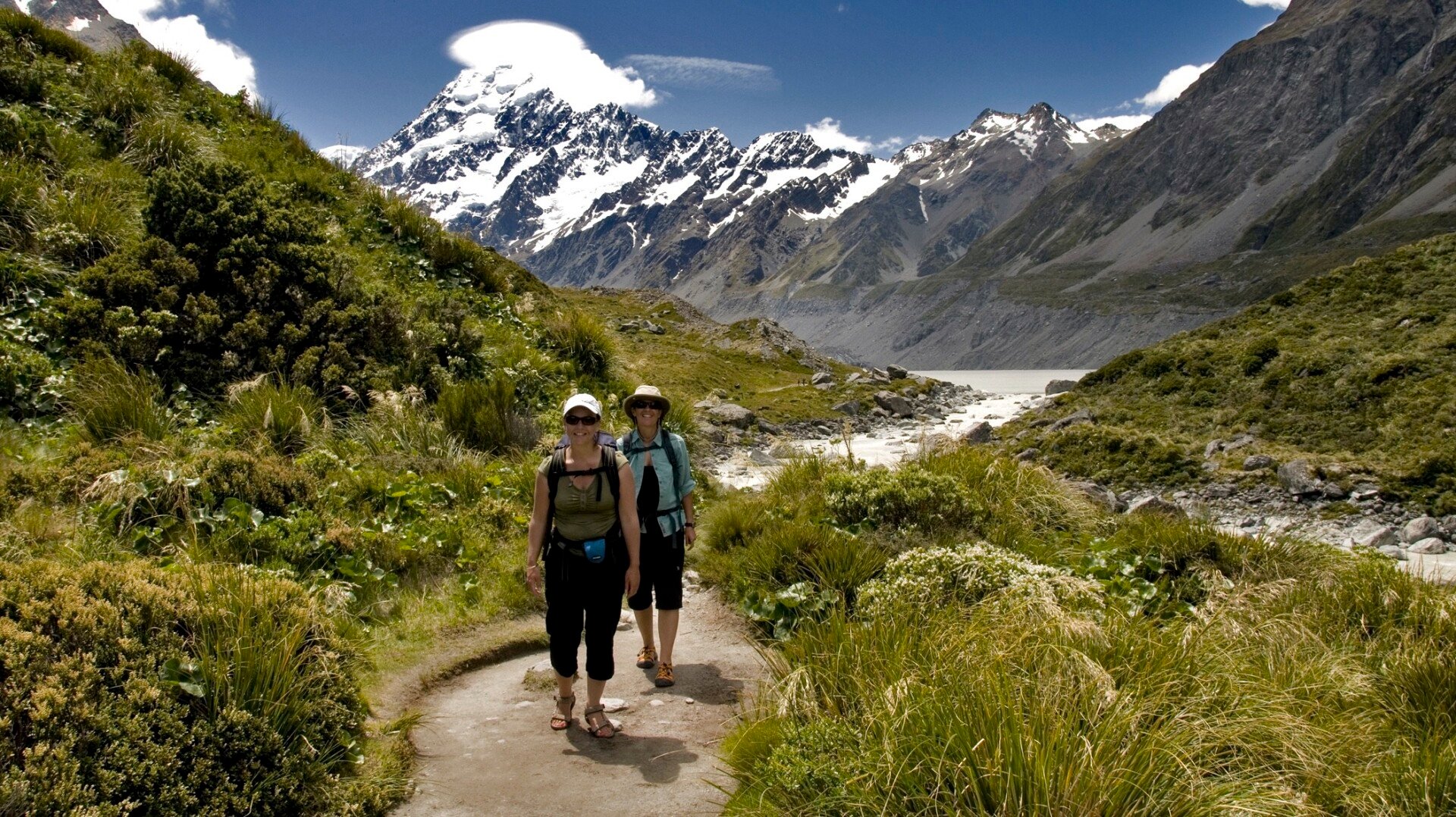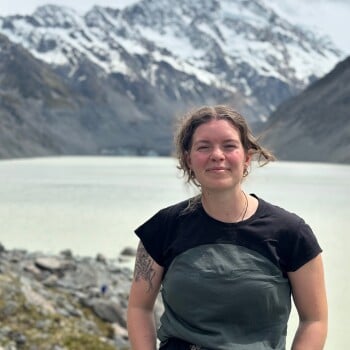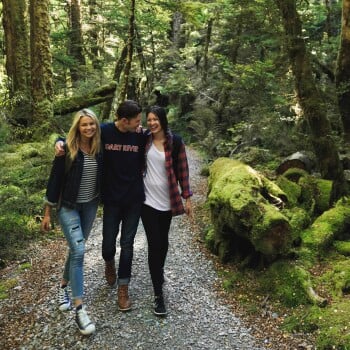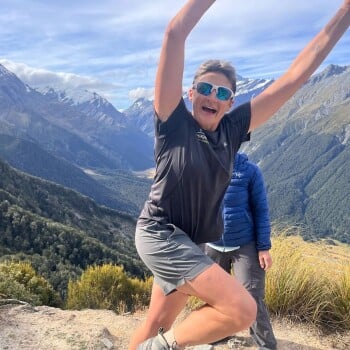- About Us
-
Trips
-
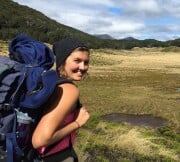 Kiwi-Style Hiking
Kiwi-Style Hiking
-
 Great Walks
Great Walks
-
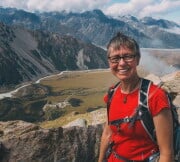 Hiking Tours
Hiking Tours
-
Alpine Hikes
-
Custom Groups
- Huayhuash Trek
- Family Northern Explorer
- Family Southern Explorer
- Lake Waikaremoana Hike
- Women's Custom Tours
- Women's Southern Wilderness
- Coast, Canyons and Mountains
- Coastal Wanderer Custom Tour
- Don't Cross the Ladies
- Secret South Custom Tour
- Tekapo Hike
- West Coast Custom Tour
- World Heritage Custom Tour
-
- Blog
- Shortlist
- About Us
- Trips
- Blog
- Shortlist

Mar 21, 2008
Molly Feltner reviews Hiking New Zealand's Secret South for online magazine, SmarterTravel.com - Published in SmarterTravel.com, March 2008
You can hike almost anywhere, but many avid hikers (including myself) believe it's well worth the 13- to 20-hour flight across the Pacific to be able to hit the trails of New Zealand.
"New Zealand is the ultimate hikers' destination, with nearly a quarter of the country's land area set aside as national parks or special reserves, more than 850 backcountry huts available for public use, and thousands of kilometers of trails to be explored," says Daniel Murphy, general manager of the adventure company Hiking New Zealand. "To appreciate New Zealand one needs to explore its backcountry on foot; just seeing it from a car or bus window will not do."
Last year, avid Canadian hiker Katelin O'Neill wanted to go on a solo trip in New Zealand and decided to book a tour with Hiking New Zealand. She chose the company's 10-day "Secret South" trip, an itinerary that includes hiking in some of the lesser-known corners of New Zealand's wild South Island. "I wouldn't have felt confident enough to venture out on my own and Hiking New Zealand seemed to provide a variety of real and rugged options within the spectrum of outdoor adventure while having the security of a reliable guide," says O'Neill.
On the trip, you'll hike a portion of the famous Routeburn Track in Fiordland National Park, kayak in the shadow of the velvety green peaks of Milford Sound ($100 extra), walk along the unspoiled Catlins Coast and Cannibal Bay, and trek around Mt. Cook, the country's highest mountain. Depending on the group, you may also be able to fit in extra activities. "[We did] things that weren't mentioned in the brochure," says O'Neill. "One serene evening after dinner we drove into the Tasman Valley for a short walk that led us to a platform of boulders overlooking the Tasman glacier, lit by a radiant full moon. Mt. Cook was to our left and the Nun's Vail on our right. It was so quiet and still—it has got to be one of my favourite places on earth."
Trip planning
Trips are scheduled regularly each month except June to August. Rates cover guides, ground transportation, cooking and safety equipment, maps and most camping equipment. You'll spend the nights camping or staying in backcountry huts.

